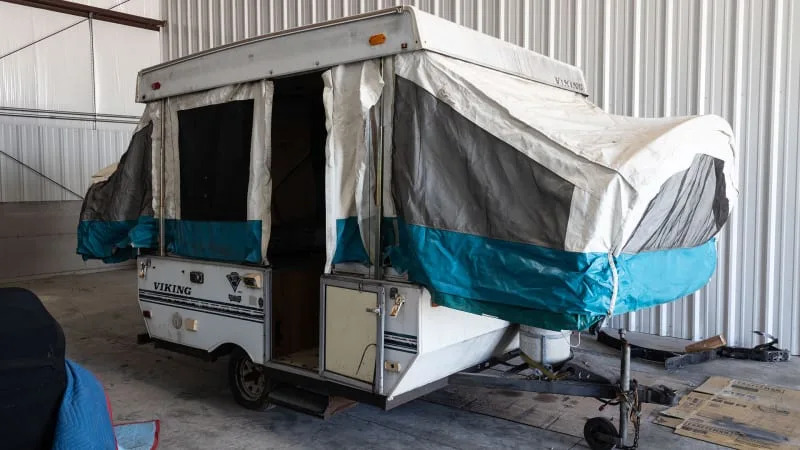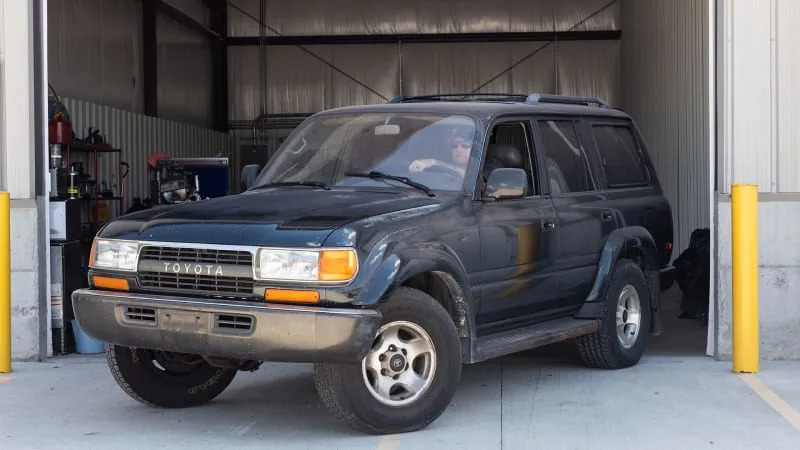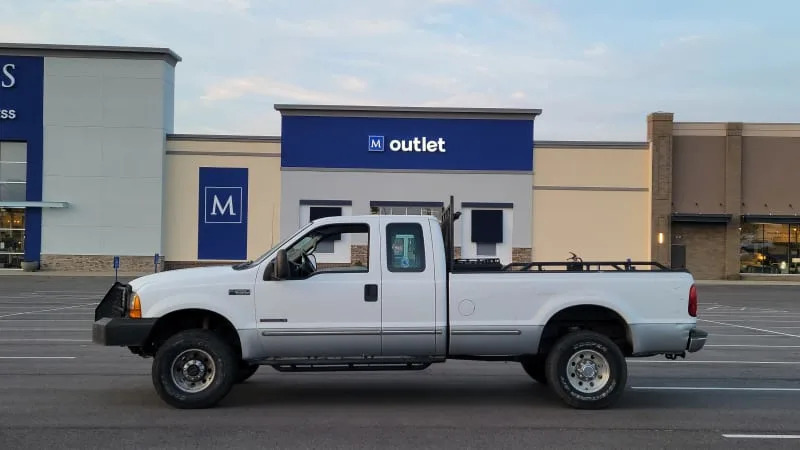Way back when, living in the big city, I got the idea to drive from Prudhoe Bay, Alaska, to Tierra del Fuego, Chile, about the southernmost tip of South America. I bought a fixer-upper 1994 Toyota Land Cruiser in 2016 for the purpose, one I planned to rebuild in the comfort of my own garage before I was forced to perform shadetree rebuilds in British Columbia or Bolivia. Voluntarily, I got as far as doing a knuckle gasket overhaul in my garage. Involuntarily, I replaced the throttle body in a hotel parking lot in Amarillo, Texas, replaced the radiator in a garage in Ohio, and replaced the alternator in an AutoZone parking lot in Kentucky.
I ended up driving the northern part of my intercontinental trip in the then-new 2018 Jeep Wrangler, taking off from Menifee, California, crossing into the U.S. twice, driving to Fairbanks, Alaska, then to Tuktoyaktuk, Northwest Territories, Canada, then home. I never finished the adventure, nor did I finish the Cruiser.
Then I moved to a much smaller town. I should have thought, “Gee, look at all this room I have to work on my truck and my Corvette and then go on some adventures.” Instead, for reasons I’m perfectly clear on, I thought, “Look at all this room I have to buy all these cars to work on and then go on some adventures.” I arrived here with two vehicles and no desire to own more. I now own two cars, three trucks, a motorcycle, a travel trailer, and a utility trailer. All but one are road legal and can be driven. All, bar none, need my attention.
I’m finally going to give it to them. This is the story of a man recovering from his project car hangover, getting greasy and oily and probably a touch bloody fixing and rebuilding his menagerie, and enjoying each vehicle the way it deserves on some grand adventure, then selling that vehicle to a good home.
We’ll start this in the order of the planned adventures. Full galleries of each will come in future posts. Let’s go:
The Jambulance
When I ended up in Tuktoyaktuk in 2018, I met a fantastic Inuit fellow named John Steen. Shortly before Covid shut the world down, John called and said I should head back to Tuk — as the locals call it — in early May 2020 so we could hop on his snowmobiles to go jiggling. The drive is a 10,000-mile round trip from my place. I had no idea what jiggling was and I still don’t. Of course, I said, “I’ll be there.”
Around the same time, I’d chatted with a few folks about building an overlander for less than $10,000. I figured the Tuk run would be a great proof-of-concept story for a sub-$10,000 traveler good to go just about anywhere. My plan was to buy a Ford E-250 or E-350 van, convert it to 4WD, and make my own Sportsmobile since the Sportsmobile company no longer makes old-fashioned, van-based Sportsmobiles anymore.
Someone I considered a friendly associate but who was Beelzebub in disguise, knowing what I was looking for, sent me a link to Facebook Marketplace to take a gander at this. It’s a 1994 Ford F-350 Type 1 ambulance named the Jambulance, powered by a 7.3-liter diesel V8. The seller said it was of sound body and the V8 ran fine, the only thing it needed was its rear brakes bled. He wanted $2,000. There were 7.3 engines alone going for nearly that. How could I lose?
I stopped by to see it. The seller had hooked up two mismatched batteries and got the engine going with an ample application of starter fluid. Engine sounded good on the run. I’d need to replace at least one of the batteries because the seller needed one of the two the 7.3 uses. By now, I figured the part about ‘just needing brakes’ wasn’t exactly true. Yet, the Jambulance spoke to me like one of those decrepit shelter dogs with the big, sad, rheumy eyes, both probably blind with cataracts. Having used the intro to this piece to explain how committed I am to a plan, you’ll understand why I bought this instead of a van.
I couldn’t bring the Jambulance home because it doesn’t fit in my garage, nor could I work on it in my sloped driveway. So I called another associate who runs a repair shop/impound lot down by the river, and he offered me a parking spot. And that, readers, is where the Jambulance has sat for three years, left with a couple thousand dollars’ worth of tools and as-yet-uninstalled parts.
It needs everything. I need to get it running, I need to fix the rear brakes, maybe evict a few tenants living and dead, free some seizures, and who knows what else, but definitely a lot of what else. I’m also converting it to four-wheel drive and turning the body into the obligatory pad for overland living. Then I’m driving it to Tuk to go jiggling. Whatever that is.
And yeah, this is gonna cost me more than $10,000. Another plan shot. Oh well.

Stig, the Viking
I’d never visited Facebook Marketplace before getting the link to the Jambulance. What an evil site. I made the mistake of scrolling down, and lo, I found this. I believe it’s a 22-foot 1996 Viking pop-up. I say “believe” because I got it out in the sticks from a guy who’d been using it as a deer hide. No title, no plates, bill of sale. Seller wanted $500. The trailer was closed when I stopped by to check it out; the seller didn’t want to open it. He said, “It takes 10 minutes.” His tone said, “Take it as-is or goodbye.” He’d posted video of the interior, so my choice was to hand over $500 and trust the video, or walk. You can see what I did.
Why? Because the Jambulance box is too short for me to fully stand up in. When I saw Stig the Viking, I got the idea to put a tow bar on the rig, put a stouter axle and some larger wheels and tires on Stig, then pull the trailer to the Arctic. The caboose would give me more living space and proper headroom.
Akin to my technique with the Jambulance, bought a couple of weeks before Stig, I parked the pop-up untouched and unopened. The first time I opened it was a few days ago to get the picture you see above. The thing could have been full of deer fluff and bricks for all this time. But it wasn’t. The interior matches the video. Seller told the truth. There is good in the world.
It needs to be gutted and rebuilt just like the tow rig, which I knew from the beginning. In an ideal world, I’ll be able to get this done in time to pull to the Arctic next May. Not that “ideal” has ever got past my project car planning stages into my project car reality.

The Corvette
This is the fabulous car I never wanted, but an uncle convinced me to buy. A 2001 Chevrolet Corvette Z06 I’ve owned since 2005. Not only have I never owned any car longer than this one, I can’t think of anything I’ve owned longer. Last time I drove it was when got caught in a snowstorm driving back home from Florida in January 2022. Then I put baby in a corner, and that’s not where she belongs.
In honor of my steed’s many years of selfless service, he gets a huge sendoff before leaving my (not-so-assiduous) care. After a new battery, then comes a deep wash and detail, followed by an assessment. Once the diagnoses are in, I’m returning Kentucky’s finest to better-than-new condition and perhaps going in for a light tune, but I need to find out about European regulations first. Why European regs? Because next April, before I head to Tuk in the Jambulance, I’m going to ship the Corvette to Germany where it’ll be registered as a German resident and tabbed with a set of local plates. Only cars with European registration can be driven on the ‘Ring. See where I’m going with this?
The adventure here is that after I return from Tuk and get the Jambulance prepped for sale, I’ll meet the ‘Vette in Germany for a summer road trip that includes a detour to the Nürburgring for one — or 28 — last victory lap(s). Then I’ll toast its acquaintance and sell it to a new owner in his adopted land before heading home to deal with …

The ‘Cruiser
The rig that started it all, the previously mentioned 1994 Toyota Land Cruiser triple-locked from the factory. A sensational truck. If buying them weren’t such a minefield, I’d recommend any curious trail hounds try one. The most wonderful and most dangerous thing I’ve learned about Land Cruisers is that they’re insanely hard to kill. Toyota supposedly developed them to last 25 years in genuinely abysmal environments, making a so-called “hard life” in the United States practically a vacation. They end up listed for sale with glowing descriptions like, “Runs perfectly” and “Never had a problem.” Then you stop by for a look and find eight types of cancer, brown sludge in the coolant reservoir tank, and puffy white clouds blown like bubbles from the exhaust. And yet, the seller’s statements were correct, if incomplete — the thing runs perfectly and there are no problems considering what’s going on underneath.
This one’s at about 280,000 miles, mechanically capable although tired inside and out. Which, again, was the point. I wanted a fixer upper.
After I replace almost everything on the way to turning beastie into an Apocalypse overlander, I will drive that overdue southern portion of my intercontinental trip all the way to Tierra del Fuego. Because I have to get the first three vehicles finished by the end of April 2024, this one is only going to get spruced up as time allows so that I can try out parts.

Herkalees
I got into side-by-sides last year. That new interest turned into another one of the adventures that has kept me away from my growing collection of neglected, misfit toys. That new interest is also responsible for adding a new misfit toy once I had the need to tow more weight than the Cruiser is rated for. I already had a Ford truck with a 7.3 diesel, I thought best to stick to that formula. Hence, Herkalees, a 1999 Ford F-250 Super Duty 4×4 with the turbocharged 7.3 Powerstroke V8.
It was anything but an absolute deal. A year ago, used truck prices were still sky high. But it was a relative deal for the times and owned by a retired Marine who took good care of it. Spent most of its life in North Carolina, so there’s only surface rust on the frame and a small rust spot on the roof. The seller changed the oil twice a year, swapping between cold- and hot-weather weights, and kept the zerks lubed. It leaks a few drops, but barely; I have a 1997 Buick Park Avenue Ultra that sheds more oil than this truck. He’d had the interior redone with pieces from a 2008 F-Series because old pickup fabric gets terribly tired and saggy, and he installed a modern stereo and speakers. There are better headlights and taillights. The bedside scuffs in the image and a small rust spot on the roof are the most serious cosmetic blemishes. He put bags on the rear suspension. A neighbor of his who was handy with a welder made the custom front bumper for the Warn 12,000-pound winch, and the bed rack with supplemental lighting. It came with the bed box, fire extinguisher, side steps, and a trailer brake controller.
Better yet, the ex-Marine only bought this to haul a house full of furniture between neighboring states — the most Marine overkill reason to buy a Super Duty — and much preferred his Toyota FJ. He hadn’t driven Herkalees much in the last couple years of his ownership, so I’ve put a new starter, alternator, and clutch pedal in it, and had the rear brake lines redone.
It should be no surprise that Herkalees needs the least amount of work, however, it could use a few more new parts. This will be the beast of burden while I play doctor on my emergency patients, the Jambulance, Stig, the Corvette, and the Cruiser.
That’s enough for an intro. My goals for August, which of course is almost over:
- Jambulance: Get it ready to be registered, thoroughly clean it outside and in, inventory my stock of parts, install new batteries, all fluids changed, check the tanks, get it starting and running properly, fix the rear brakes.
- Stig: Bring the trailer home for a full assessment, do an initial strip to get all the easy bits out, try to find a serial number.
- Corvette: A thorough clean, full tune-up and all fluids changed, assess the mechanicals and electronics, sell the wheels that are on it now.
- Herkalees: All fluids changed, source a new suspension and new tires, check the turbo and piping for leaks, get clamps for the bed toolbox.
Read the full article here


